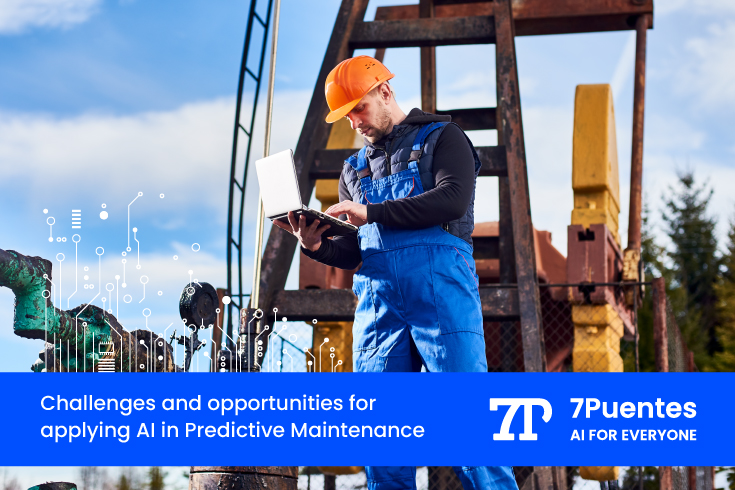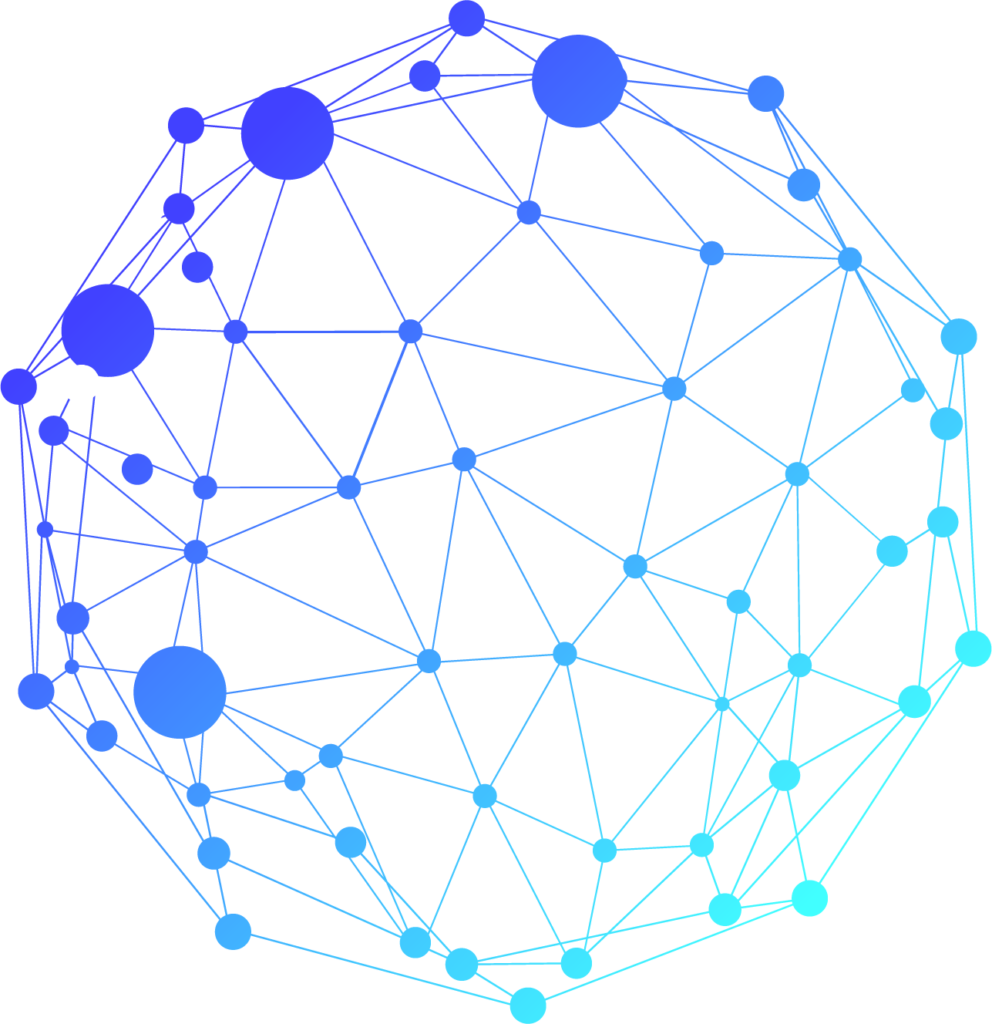The convergence of predictive maintenance with artificial intelligence (AI) and machine learning (ML) is driving a technological revolution in industrial management. AI’s ability to analyze large amounts of data, identify imperceptible patterns, and facilitate decision-making has transformed the way companies manage their processes and assets.
However, there are important challenges in defining the right strategy: from deciding whether a supervised ML model is better than an unsupervised one, to being able to generate accurate diagnoses given the problem of having dozens of heterogeneous assets in the same industrial plant, with very different technical characteristics. In this sense, there are countless opportunities that the Oil & Gas industry can explore and exploit by taking the appropriate actions, such as applyin AI in predictive maintenance
What is Predictive Maintenance?
Predictive Maintenance is a technique that allows the detection of anomalies and defects in the operation of equipment and processes, with the aim of resolving them before failure occurs. This tool uses data analytics to anticipate system failures and also leverages the Internet of Things (IoT) to install sensors in the various assets of industrial plants and monitor their operation in real time.
In today’s highly competitive and rapidly evolving oil and gas industry, the pressure to optimize operations while reducing costs is greater than ever. As executives, CEOs, and CIOs in this sector, you are constantly looking for new solutions to help maintain equipment, predict failures, and improve overall efficiency. Enter the power of artificial intelligence (AI). AI has transformed several industries with its ability to analyze massive amounts of data and make accurate predictions. However, when it comes to implementing AI for predictive maintenance in the oil and gas industry, there are unique challenges to overcome.
Are there ways to improve reliability curves? That is, the probability that a system or piece of equipment will operate correctly and without incident for a given period of time.
With advances in AI and ML, large amounts of data generated by sensors and other devices can be quickly analyzed to identify subtle patterns that could indicate potential problems, or to develop predictive algorithms that could identify anomalous patterns in an organization’s physical assets, which could mean early warnings of problems inherent in equipment or machinery in general.
Now, when developing a machine learning model for predictive maintenance, there are different issues to consider depending on the characteristics of the organization and its operational processes. We will now explore each of these challenges:
- Condition-based maintenance (CBM) versus performance management (PM): On the one hand, CBM is a proactive strategy that uses monitoring to anticipate problems before they occur. It relies primarily on adequate sensing and accurate analysis of data, especially those that indicate the current (non-obvious) condition of the equipment. Performance management, on the other hand, deals with the outputs, results, or visible indicators that tell me something is wrong. The classic example is an oil company that needs to monitor the proper pressure of its oil wells. It can use CBM to monitor equipment signals and extract behavioral patterns from the analysis of that data. Or it can simply use PM to draw preliminary conclusions, such as if oil is not coming out of the well, if the flow rate is dropping, then there is a high probability that we are facing a pressure failure. Which technique works best? It depends on the company’s management strategy and how it can incorporate machine learning techniques so that the models themselves learn from failures and can predict them.
- Data acquisition: A major problem in predictive maintenance is data acquisition, because once the sensing, wiring and equipment monitoring infrastructure is in place, common problems begin to appear.
- Too many signals: if the company has a lot of active equipment and the same equipment is different from each other or is being replaced by newer equipment due to technological reasons, we are in trouble because it is very complex to interpret such heterogeneous signal data.
- Few fault data: One of the reasons why traditional ML usually fails is that there are few faults and events to process, so generating a custom solution does not compensate for this lack of data. The important thing is to create a good data pre-processing infrastructure and data lake so that there is more reliability in capturing, analyzing and grouping these data as events.
- Difficulties of unsupervised ML: When the problems mentioned above become apparent, the teams linked to IT and Software generally tend to develop unsupervised models, that is, they try to automate the error detection processes. Given the variety of different signals, it is very complex to analyze the cause of a device failure in each individual signal. And although these different signals are usually grouped or synthesized, in the end operators do not manage to understand 100% why a device fails. And without a doubt, this model needs some clear adjustments and improvements, in pursuit of our reliability curve and intelligent data analysis.
- Asset monitoring to prevent failures: Typically, IoT-derived techniques facilitate asset monitoring, with vibration analysis, ultrasound, and non-destructive techniques that allow us to accurately monitor the condition of each part and whether any are about to break. For example, we can know if an «arm» of our industrial machinery that is critical to production is about to break, if a gear on our cranes that is difficult to replace (due to its spare parts) is about to fail, or if a piece of equipment is overheating (through thermal signals). However, detecting these failures can be difficult when we have hundreds of pieces of equipment running in parallel. The incorporation of real-time video techniques to monitor equipment, which complements real-time IoT sensing, makes this process easier because it allows us to see these internal structures of parts and gears and makes the process easier. We can actually diagnose by seeing what is happening to our assets. This is closely related to supervised ML models because an operator can monitor failures in real time and feed them into the model. The problem is that some types of failures may be rare, unpredictable or unlikely in some cases.
- Supervised ML vs. Unsupervised ML: Currently, the landscape that companies face for predictive maintenance is choosing a supervised or unsupervised machine learning model. As discussed, if we choose the traditional supervised ML approach, we have several challenges because we end up with custom models and we have to manage the model with very few events or failures. And, of course, this model does not scale. And when we go to the unsupervised ML side, it is complicated to interpret the data, to determine what is happening with the failures of our equipment and predictive maintenance in general. So there are still a lot of challenges to solve.
- The promises of GenAI in Predictive maintenance: Obviously, there are promises that have to do with these new types of data to process and analyze, such as audio and video, where there is the possibility of using GenAI to process the signals, especially in the Oil & Gas industry (see previous post by 7Puentes). The classic example is a plant operator who takes a long time to reason about the problem or find the cause of an anomaly detection model and tries to take advantage of large language models (LLMs) and their reasoning capacity to be able to find these errors automatically. Let’s say we have another disturbance that causes an anomaly in a piece of equipment – within what’s called Principal Component Analysis (PCA), which is a widely used data compression technique – this technology would help us understand which of all the variables of the different assets is causing a failure. Given that there are dozens of variables in different pieces of equipment, the ability to use LLMs to help us detect that failure is a very interesting opportunity.
Cost-effective fault detection
Among the anomaly detection methods that reduce the time and increase the results or benefits of using our assets with adequate and preventive maintenance, the following elements stand out:
- The importance of maintenance scheduling planning in our operations: Planning preventive maintenance in our operations, knowing and efficiently anticipating each of the failures is one of the keys to an efficient strategy.
- A better way to allocate and analyze downtime: This aspect is usually considered in the so-called «downtime allocation», which involves defining when to buy spare parts based on delivery delays and what type of spare parts we need to stock, anticipating possible equipment needs. Let’s say we have a fleet of vans in our industrial plant or a fleet of several trucks that we can’t have stopped because we have to stop distributing goods or supplies and therefore production stops. We need to know exactly what spare parts we need in order to minimize the downtime of these vehicles.
- Optimization Models: To optimize these ML models, Bayesian optimization is usually used, which tends to create a probabilistic model that tells us more precisely when we should do the appropriate maintenance (i.e. not wait for a failure or a part to break) and what spare parts we need to buy at what time of the year. Typically, most machine learning models have a set of parameters that cannot be learned from the data, but must be determined after training. These parameters are often called hyperparameters, and Bayesian solutions are often a viable option. In turn, artificial intelligence can help reduce false positives by continuously adjusting its models. By constantly analyzing the results of generated alerts and comparing them to actual results, algorithms can improve accuracy and reduce unnecessary alerts.
7Puentes as a strategic ally to better understand AI in predictive maintenance
If your Oil & Gas company has specific needs and AI predictive maintenance problems, this is your opportunity: we can help you better understand each problem, not waste valuable company time or resources, and generate new benefits by designing cost-effective AI solutions.
In short, the team of ML experts at 7Puentes can advise you on the right strategy to use AI to efficiently support your predictive maintenance project.


